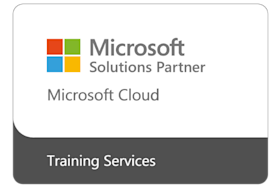Course subjects
Module 1: SSIS Overview
This module explains the purpose of SSIS and teaches how to use the Import/Export Wizard to exchange data between data structures.
Lessons
Lab 1: SSIS Overview
Module 2: Working with Solutions and Projects
In this module, students learn to work with SQL Server Data Tools (SSDT) to design and deploy reports.
Lessons
Working with SQL Server Data Tools
Understanding Solutions and Projects
Working with the Visual Studio Interface
Lab 1: Working with Solutions and Projects
Module 3: Basic Control Flow
The Control Flow tab of the SSIS Designer is used to organise the general flow of your package execution. The control flow of a package includes different element types, such as tasks, containers, and precedence constraints. Each of these element types has a set of properties that you will use to define and manage individual instances of these elements. In this module, students learn to add containers or tasks from the SSIS Toolbox to the Control Flow Designer.
Lessons
Lab 1: Basic Control Flow
Module 4: Common Tasks
Microsoft has organised the tasks in the Common section of the SSIS Toolbox alphabetically. This module will touch on the functionality of each of these tasks, and provide Try It exercises for the tasks that are most commonly seen in classes and companies.
Lessons
Lab 1: Common Tasks
Create a package to copy a file and send an email message on completion
Create a package to perform data profiling and then review the results
Create a master package and test the execution flow of the child packages
Module 5: Data Flow Sources and Destinations
In this module, students will learn to work with data flow sources and destinations.
Lessons
The Data Flow Task
The Data Flow SSIS Toolbox
Working with Data Sources
SSIS Data Sources
Working with Data Destinations
SSIS Data Destinations
Lab 1: Data Flow Sources and Destinations
Module 6: Data Flow Transformations
In this module, students learn about transformations, which allow you to modify data in the data flow pipeline.
Lessons
Lab 1: Data Flow Transformations
Module 7: Making Packages Dynamic
In this module, students will learn to make SSIS packages dynamic.
Lessons
Lab 1: Making Packages Dynamic
Module 8: Containers
In this module, students learn to use containers, which provide a way to organise tasks that need to be managed together as a group.
Lessons
Sequence Containers
For Loop Containers
Foreach Loop Containers
Lab 1: Containers
Module 9: Troubleshooting and Package Reliability
This module puts together common troubleshooting methods along with some of the reliability features for SSIS all in one place.
Lessons
Lab 1: Troubleshooting and Package Reliability
Module 10: Deploying to the SSIS Catalog
The project deployment model provides the framework for new functionality such as the SSIS catalog, environments, project level parameters and project level connection managers. This module explains how to deploy projects to the SSIS catalog.
Lessons
The SSIS Catalog
Deploying Projects
Working with Environments
Executing Packages in SSMS
Executing Packages from the Command Line
Deployment Model Differences
Lab 1: Deploying to the SSIS Catalog
Module 11: Installing and Administering SSIS
In this module, students will learn to install, upgrade, and administer SSIS.
Lessons
Installing SSIS
Upgrading SSIS
Managing the SSIS Catalog
Viewing Built-in SSIS Reports
Managing SSIS Logging and Operation Histories
Automating Package Execution
Lab 1: Installing and Administering SSIS
Module 12: Securing the SSIS Catalog
In addition to the standard SQL Server database and instance permissions that can be configured like any other database, the SSIS catalog has special pre-defined database roles and additional permissions that can be assigned for the management and execution of SSIS packages. In this module, students learn to work with roles and permissions to secure the SSIS catalog.
Lessons
Lab 1: Securing the SSIS Catalog

